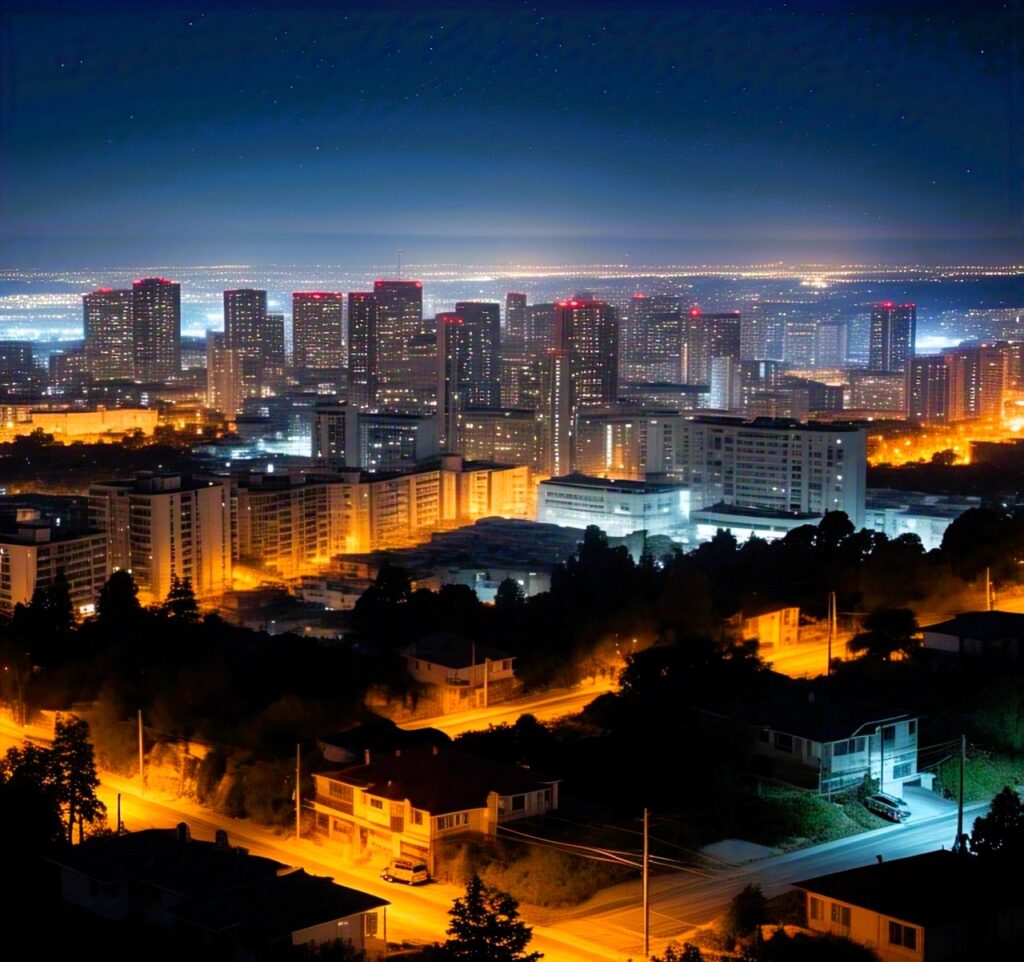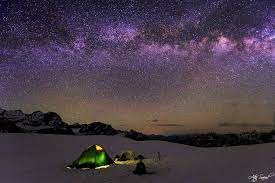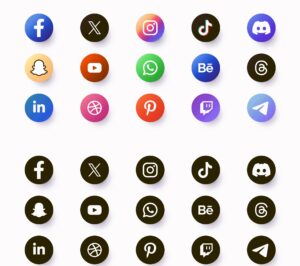Understanding Light Pollution 2025: The Dark Side of Light
Light pollution is a growing problem worldwide. It occurs when artificial light from human activities illuminates the night sky, making it difficult to see stars and other celestial objects.
light pollution, unwanted or excessive artificial light. Like noise pollution, light pollution is a form of waste energy that can cause adverse effects and degrade environmental quality. Moreover, because light (transmitted as electromagnetic waves) is typically generated by electricity, which itself is usually generated by the combustion of fossil fuels, it can be said that there is a connection between light pollution and air pollution (from fossil-fueled power plant emissions).

Light pollutionWhat Causes Light Pollution?
Light pollution is primarily caused by:
Streetlights: Streetlights are a major contributor to this pollution. They emit a broad spectrum of light that shines upwards, illuminating the sky.
Building Lights: Lights from buildings, such as offices and homes, can also contribute to pollution.
Advertising Billboards: Brightly lit advertising billboards can shine light into the sky, adding to the problem.
Here are the risk factors associated with this pollution:
Environmental Risks
Disrupts Ecosystems: It affects the natural habits of nocturnal animals, such as birds, bats, and insects.
Impacts Plant Growth: Artificial light can alter the growth patterns of plants, affecting their development and reproduction.
Affects Aquatic Life: This pollution can penetrate water bodies, disrupting the habitats of aquatic animals.
Health Risks

Sleep Disturbances: Exposure to artificial light at night can suppress melatonin production, leading to sleep disorders.
Circadian Rhythm Disruption: Prolonged exposure to light pollution can affect the body’s natural circadian rhythm.
Increased Risk of Chronic Diseases: Studies suggest that pollution may increase the risk of obesity, diabetes, and cardiovascular disease.
Economic and Social Risks
Energy Waste: It results in unnecessary energy consumption, leading to economic losses.
Decreased Property Values: This pollution can negatively impact property values and quality of life.
Impacts on Astronomy and Stargazing: It can limit our ability to

Observe the night sky, which affects astronomical research and public enjoyment.
Effects of Light Pollution
It has several negative effects on:
Astronomy makes it difficult for astronomers to study the night sky.
Wildlife: It can disrupt the natural behaviours of nocturnal animals.
Human Health: Exposure to artificial light at night can lead to sleep disorders and other health problems.
Solutions
To reduce this pollution, we can:

Use Energy-Efficient Lighting: Switch to energy-efficient lighting options, such as LEDS, which emit less light into the sky.
Install Smart Lighting: Install smart lighting systems that can be adjusted to minimise light pollution.
Create Dark Sky Preserves: Establish dark sky preserves, where artificial lighting is minimised or eliminated.
Initiating Awareness Programs to Reduce Light Pollution from Vehicles
To mitigate the impact of light from vehicles, awareness programs can be undertaken to encourage responsible driving practices. Here are some strategies to consider:
Awareness Programs
Public Service Announcements (PSAS): Create PSAS to educate drivers about the effects of light pollution and the importance of using low-beam headlights in cities.

Social Media Campaigns: Utilise social media platforms to share informative content, infographics, and videos highlighting the risks of light pollution from vehicles.
Collaborate with Driving Schools: Partner with driving schools to incorporate light pollution awareness into their curriculum.
Community Outreach: Organise community events, workshops, and seminars to engage with drivers and promote responsible driving practices.
Encouraging Responsible Driving Practices
Use Low-Beam Headlights: Encourage drivers to use low-beam headlights in cities to reduce glare and light pollution.
Dim or Switch Off High-Beams: Remind drivers to dim or switch off high beams when approaching oncoming traffic or driving in well-lit areas.
Avoid Using Full Lights: Educate drivers about the risks of using full lights in cities and encourage them to use low-beam headlights instead.
Incentivising Responsible Behaviour
Reward Schemes: Implement reward schemes for drivers who demonstrate responsible driving practices, such as discounts on insurance or fuel.
Recognition Programs: Develop recognition programs to acknowledge drivers who contribute to reducing light pollution.
Public Recognition: Publicly recognise and appreciate drivers who make a positive impact on reducing this pollution. By initiating awareness programs and encouraging responsible driving practices, we can reduce light pollution from vehicles and promote a safer, more sustainable environment.
Embracing Dawn-to-Dusk Light Timings: A Simple Yet Effective Way to Reduce Pollution
As we strive to mitigate the effects of such pollution, one simple yet effective approach is to follow light-off timings according to the dawn and dusk durations in different regions. This practice not only helps reduce such pollution but also promotes energy efficiency, supports nocturnal wildlife, and enhances our overall quality of life.
Understanding Dawn and Dusk Durations: Dawn and dusk durations vary across different regions, depending on factors like latitude, longitude, and time of year. By understanding these durations, we can adjust our lighting schedules to minimise the pollution.
Benefits of Following Dawn-to-Dusk Light Timings
Reduced Pollution: By turning off lights during dawn and dusk, we can significantly reduce the pollution, which can disrupt ecosystems, affect human health, and waste energy.
Energy Efficiency: Adjusting our lighting schedules to natural daylight hours can help reduce energy consumption, leading to cost savings and a reduced carbon footprint.
Supports Nocturnal Wildlife: By minimising artificial light at night, we can help support nocturnal wildlife, which relies on darkness to navigate, find food and breed.
Improved Human Health: Exposure to natural light-dark cycles can help regulate our circadian rhythms, leading to improved sleep quality, reduced risk of chronic diseases, and enhanced overall well-being.
Implementing Dawn-to-Dusk Light Timings
Automate Lighting Systems: Install smart lighting systems that can automatically adjust to dawn and dusk timings.
Use Timers and Schedules: Set timers and schedules for outdoor lighting to ensure they are turned off during dawn and dusk.
Adjust Lighting Fixtures: Install motion sensors or adjust lighting fixtures to focus light downward, reducing light pollution.
Educate and Raise Awareness: Share the importance of following dawn-to-dusk light timings with family, friends, and community members to promote a collective effort to reduce light pollution.
By embracing dawn-to-dusk light timings, we can make a significant impact on reducing this pollution, promoting energy efficiency, and supporting the well-being of both humans and wildlife.
Some Media campaign strategies/suggestions
For Big Businesses
“Switch Off, Save Tomorrow”: Encourage companies to turn off unnecessary lights after work hours.
“Green Lighting”: Promote energy-efficient lighting solutions and their benefits.
“Lighting Audit”: Offer free lighting audits to help businesses identify areas of improvement.
For Small Businesses
“Small Steps, Bright Future”: Highlight the impact of small businesses on reducing such pollution.
“Eco-Friendly Lighting”: Showcase affordable, eco-friendly lighting options for small businesses.
“Community Lighting Challenge”: Encourage small businesses to compete in reducing their lighting usage.
For Drivers
“Dim Your Lights, Save the Night”: Remind drivers to dim their headlights when approaching oncoming traffic.
“Respect the Night”: Encourage drivers to reduce their speed and lighting usage at night.
“Lighting Safety Tips”: Provide tips on safe driving practices at night, including proper lighting usage.
Social Media Campaigns
Light Pollution Awareness: Share infographics, videos, and personal stories about it.
Switch Off For The Planet: Encourage people to turn off unnecessary lights and share their experiences.
Eco-Friendly Lighting: Showcase eco-friendly lighting products and solutions.
Influencer Partnerships
Partner with eco-influencers: Collaborate with social media influencers who focus on sustainability and environmental issues.
Work with local celebrities: Partner with local celebrities to promote this pollution awareness and reduction efforts.
Educational Content
Infographics: Create informative infographics about light pollution, its effects, and solutions.
Videos: Produce short videos explaining light pollution and its impact on the environment.
Blog posts: Write informative blog posts about light pollution, its causes, and ways to reduce it.
Conclusion
It is a significant problem that affects us all. By understanding its causes and effects, we can work together to reduce light pollution and preserve the natural beauty of the night sky.
ناشتہ 24/25: آپ کا دن کا سب سے اہم کھانا


